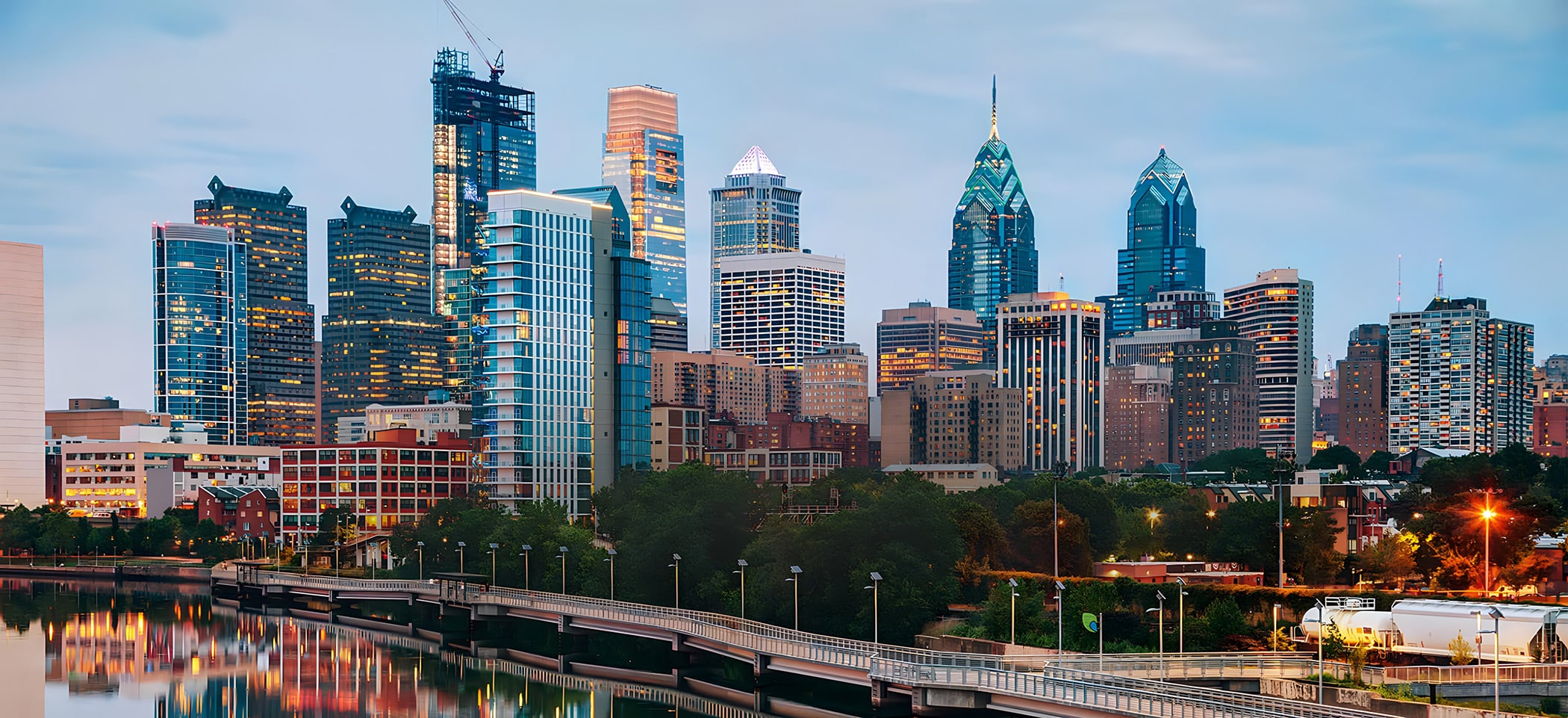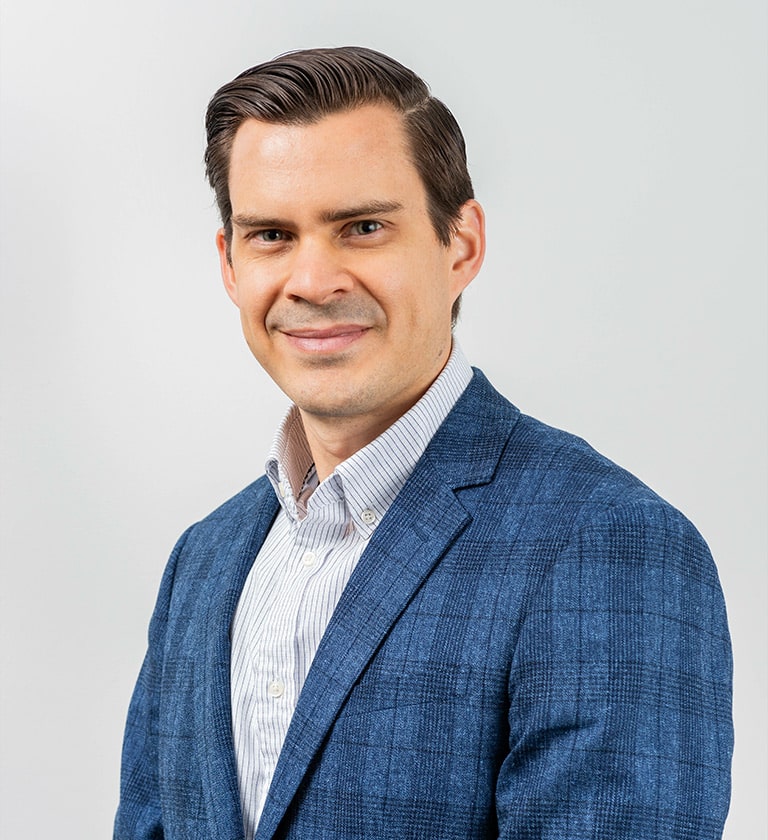
Revision Rhinoplasty in Philadelphia
Unhappy with your previous nose job? Dr. Kirk Lozada specializes in revision rhinoplasty, offering a second chance for those seeking refinement or correction following their primary nose surgery. Our dedicated approach in Philadelphia focuses on addressing unique challenges and achieving the delicate balance between aesthetic enhancement and functional improvement.
Find Harmony and Balance with the Benefits of Revision Rhinoplasty
Revision rhinoplasty may be performed for: second chance at achieving your desired nose shape; it’s a powerful step towards self-confidence and renewed beauty. By addressing previous surgical concerns, it promises a harmonized facial symmetry and enhanced aesthetics, offering myriad benefits to those who choose this transformative procedure.
Before and After Revision Rhinoplasty Photos
* All patients are unique and individual results may vary.

What is Revision Rhinoplasty?
Are you unhappy with your recent nose job? Dr. Lozada is a revision rhinoplasty specialist and has helped many patients in the Philadelphia area with their nose surgery needs. As a Facial Plastic Surgeon who only performs cosmetic surgeries in the head & neck region, Dr. Lozada has the training and experience to correct previous unsatisfactory work.
Rhinoplasty is a powerful operation that can transform the appearance and balance of the entire face. Unfortunately, patients may be dissatisfied with their prior surgery and seek a revision procedure to achieve their aesthetic and functional goals. Revision rhinoplasty is a complex operation and patients must see surgeons who are both knowledgeable and experienced in these procedures.
Revision rhinoplasty may be performed for:
- Asymmetric or large nasal tips
- Residual dorsal humps
- Breathing difficulties
- Nostril asymmetry
- Upturned or unsightly noses
How Does Revision Rhinoplasty Differ From the First Procedure?
Once the nose has undergone one operation the skin, cartilage, and bone are forever changed. Seemingly small issues can be challenging and complex to repair. Most unsatisfactory results stem from structural issues to the cartilage and bone. Thus, fixing things the second time around usually requires re-supporting these components to ensure optimal results.

Need more information?
Call us or email us to make an appointment
Is Revision Rhinoplasty Performed Open or Closed?
Revision rhinoplasty is typically performed in an open fashion. Revision surgery requires full control of all components of the nose and usually requires rebuilding support. This requires the open approach to get the best results.

The Revision Rhinoplasty Consultation
Our Revision Rhinoplasty consultation begins with a discussion about the goals for surgery. Dr. Lozada will take time to discuss what happened during and after the previous operation(s). Dr. Lozada will then examine the external and internal components of your nose and discuss his findings with you. Next, state-of-the-art 3-D photographs are taken with the Vectra imaging system and analyzed using the advanced Mirror software. This software program allows real-time morphing during the consultation to demonstrate proposed changes. Dr. Lozada will share before and after photographs of previous patients to help illustrate actual surgical results. Finally, Dr. Lozada will develop a personalized surgical plan for you. Questions are encouraged throughout the entire consultation process. Dr. Lozada loves engaged patients!
TESTIMONIALS
Before and After Revision Rhinoplasty Photos
* All patients are unique and individual results may vary.
Are Cartilage Grafts Necessary for Revision Rhinoplasty Surgery?
Revision rhinoplasty typically requires rebuilding the support structures of the nose. This helps issues like twisted noses, collapsed nostrils/breathing issues, and residual asymmetries. Strong straight pieces of cartilage are required to correct most issues during revision rhinoplasty. Options of cartilage include septal cartilage, ear cartilage, and rib cartilage. A personal surgical plan will be developed during the consultation, and all grafting options will be discussed by Dr. Lozada.
The Rhinoplasty Procedure
Rhinoplasty is an outpatient procedure and is done under general anesthesia. Dr. Lozada has extensive training in multiple rhinoplasty techniques and tailors his approach to each patient’s case. He specializes in both endonasal “scarless” as well as open rhinoplasty. During the procedure, the cartilage and bony structures of the nose are accessed via specialized incisions. The bone can be shaped with special tools, and the cartilage may be removed, re-shaped, or augmented. Specific cases may require additional cartilage from either the septum or the ear. At the conclusion of the procedure, a splint is placed on the nose, which is left in place for approximately 4-5 days. Dr. Lozada does not routinely place packing inside the nose after rhinoplasty surgery.
The Revision Rhinoplasty Procedure
Revision rhinoplasty, an outpatient procedure performed under general anesthesia, addresses issues from previous surgeries. Dr. Lozada, with extensive training in revision procedures, employs advanced techniques to evaluate and plan each surgery uniquely. Typically performed in an open fashion, the procedure involves accessing nasal structures through specialized incisions to reshape or augment cartilage and bone. Additional cartilage, often from the septum or rib, may be necessary. Following surgery, a splint is placed on the nose for 5-7 days, with optional soft splints inside the nose. The focus is on rectifying issues such as asymmetry, breathing difficulties, or dissatisfaction with the nose’s appearance, ensuring a personalized approach to each patient’s needs.
What to Expect From Your Revision Rhinoplasty
Embarking on a revision rhinoplasty journey with us means receiving comprehensive care tailored to your unique situation. Expect a detailed discussion about your aesthetic goals, a realistic overview of the achievable outcomes, and a clear understanding of the recovery process. Our goal is to align your expectations with the possibilities of revision surgery, ensuring a satisfying outcome.
Recovering from Revision Rhinoplasty Surgery
Recovery from Revision Rhinoplasty is highly variable depending on the type of procedure performed. Swelling and bruising are expected, with the majority subsiding within two weeks. Swelling lasts longer in patients undergoing revision surgery. Patient’s may experience some discomfort after the procedure, but high-dose pain medication is not required. Nasal saline sprays are encouraged to keep the nasal passages open. Any bruising around the eyes is easily concealed with makeup for the first week after surgery. Patients are expected to take it easy for the first week and thereafter may return to work. The cast and sutures are removed around 5-7 days after surgery. Patients are instructed not to perform exercise or heavy lifting for a period of 2 weeks after surgery. The majority of the swelling has subsided 2-3 weeks after surgery but small amounts of swelling continue to subside weeks after the surgery. The nose continues to heal for months after Revision Rhinoplasty and results are not considered final until a year after surgery.

Why Should I Choose Dr. Lozada to Perform My Revision Rhinoplasty?
Dr. Lozada is a Penn Medicine facial plastic surgeon and Philadelphia’s leading revision rhinoplasty surgeon. He is an editor of the prestigious online textbook Rhinoplasty Archives and has extensive training and experience in all types of Revision Rhinoplasty procedures. He has trained with some of the top experts in Rhinoplasty on the East Coast. If you are looking for the best rhinoplasty surgeon in Philadelphia, he is ready to help you.
Dr. Kirkland N. Lozada, MD, is double board-certified in Otolaryngology Head and Neck Surgery and Facial Plastic and Reconstructive Surgery.








